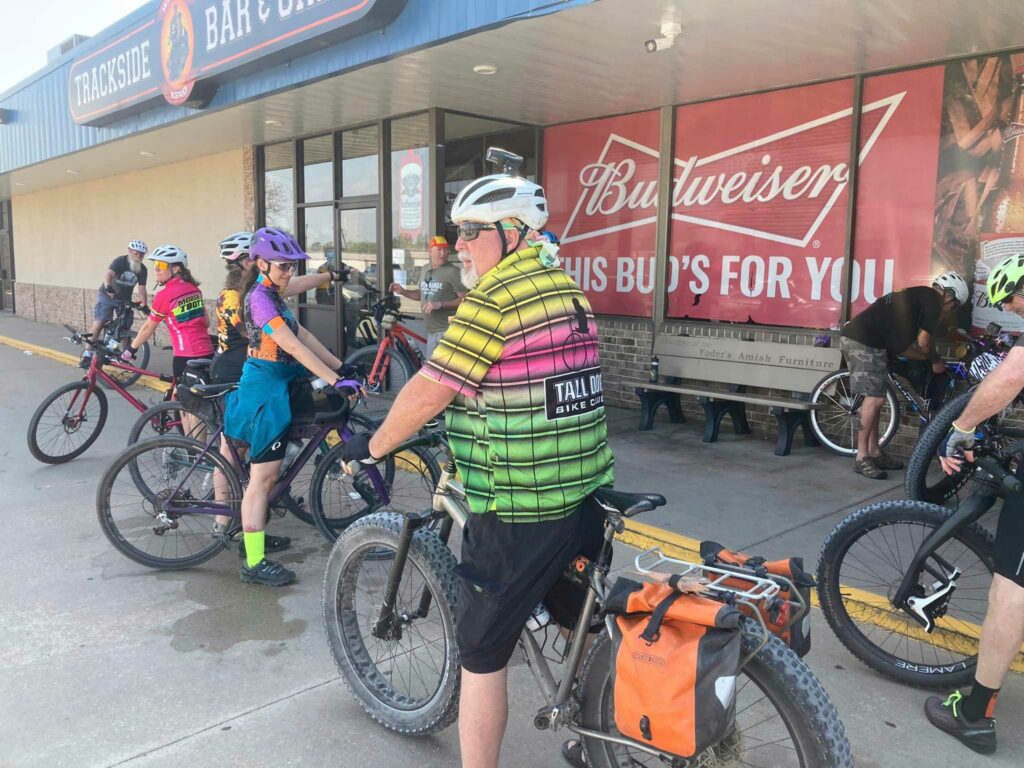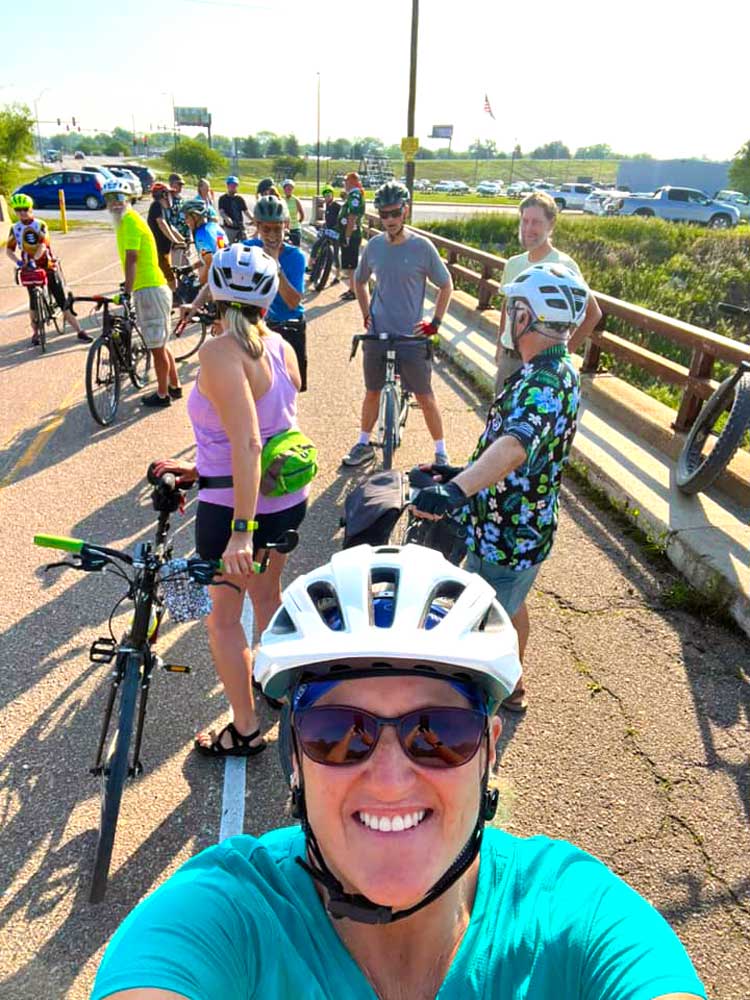Bicycle Safety
Safety while riding a bicycle means understanding what to do and where to be on the road. It involves riding in a predictable fashion and obeying traffic laws. Be aware of when you might put yourself in a position where a driver may not realize that you are there. Watch out for car doors, drain grates – that sort of thing. Keep your bicycle in top mechanical condition. Be extra careful when riding at night. Even with lights and reflectors, the chances of an accident at night are much higher than during the daytime. (Lincoln now requires a front headlight and a rear taillight — not just a reflector — when riding a bicycle at night. Follow the law. It makes good sense.)

Wear a helmet!
We won’t allow riders on our rides without a helmet. A helmet won’t make you a safer rider, and it won’t ensure that you won’t be injured in an accident, but it will substantially reduce your chances of a head injury.
Bicycle Safety Education
For several years GPBC has worked to educate Lincoln/Lancaster County kids and their parents about safe bicycling. We have a Club booth at community events such as Safe Kids Days, Trail Trek, neighborhood gatherings, and wellness/health fairs. Since 2008 we have contacted almost 12,000 kids and parents, giving them information about best bicycling practices.
We need volunteers to help us educate people, and we are always looking for more events and other ways we can help people learn about effective bicycling. Come help us make bicycling safer and more fun! Please check the
community events list in the sidebar for upcoming volunteer opportunities and contact Bob Boyce, Chair of the Education Committee, at bobboyce66@gmail.com, or 770-6865.
Street or Sidewalk?
One common misconception of many inexperienced riders is that it’s safer to ride on the sidewalk. While there are undoubtedly stretches of certain streets where that may be true, it is not true in general, most notably not for adult riders capable of reasonable speed and who understand vehicle movements. Sidewalks expose the bicyclist to greater chances of accidents on account of sidewalk irregularities, vehicles going in and out of driveways, and pedestrians. Crossing streets on a bicycle using the crosswalk is much more likely to result in bicycle-vehicle accidents than when the bicycle is riding down the street in a normal fashion.
Bike Safety Links
Not all riders agree on every detail of safe riding, but most agree on the essentials. Check the links below for more safety information from various sources.
Bike Safety for Kids
Bicycle Safety Tips from the Lincoln-Lancaster County SAFE KIDS Coalition
BicycleSafe.com provides several clear, well-illustrated articles on bicycle safety, including the must-read How to Not Get Hit by Cars.
Bike Safety article at kidshealth.org
Parent’s Guide to Child Bicycle Safety
Bicycle Safety Checklist for Kids

General Bike Safety
Tips on Riding Better – from Leage of American Bicyclists
Where to Ride on the Road from a site on Arizona Bike Law, but with comments from many organizations on when it is proper to “take the lane”.
Bicycle Helmet Safety Institute
Pedestrian and Bicycle Information Center (U.S. Dept. of Transportation)
Federal Highway Administration’s Pedestrian & Bicycle Safety Research Page
Bicycle Safety from a Down-Under perspective (Australia)
John Forester is another person with an interesting and thought-provoking website on bicycle safety.
The Pennsylvania state Bicycle Driver’s Manual is notable for its completeness, although there is some advice regarding laws that is not accurate for Nebraska.

